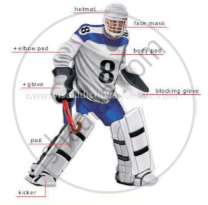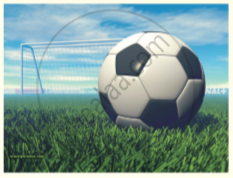Advertisements
Advertisements
प्रश्न
Mr. Oliver, an Anglo-Indian teacher, was returning to his school late one night on the outskirts of the hill station of Shimla. The school was conducted on English public school lines and the boys – most of them from well-to-do Indian families – wore blazers, caps and ties. “Life” magazine, in a feature on India, had once called this school the Eton of the East.
Mr. Oliver had been teaching in this school for several years. He’s no longer there. The Shimla Bazaar, with its cinemas and restaurants, was about two miles from the school; and Mr. Oliver, a bachelor, usually strolled into the town in the evening returning after dark, when he would take short cut through a pine forest.
Read the extract given below and answer the question that follow.
When did Mr Oliver return from the town?
उत्तर
Mr Oliver usually returned after dark.
APPEARS IN
संबंधित प्रश्न
Thinking about the poem
Discuss what these phrases mean to you.
(i) a yellow wood
(ii) it was grassy and wanted wear
(iii) the passing there
(iv) leaves no step had trodden black
(v) how way leads on to way
Thinking about the Poem
What do the following phrases mean to you? Discuss in class.
(i) humid shadows
(ii) starry spheres
(iii) what a bliss
(iv) a thousand dreamy fancies into busy being start
(v) a thousand recollections weave their air-threads into woof
How does he narrate the story of the tusker? Does it appear to be plausible?
Subject Verb Agreement.
A verb must be in the same number and person as its subject e.g.
(a) A man and his wife have lived here since January 2009.
(b) Arun, a great scholar, is dead.
(c) Either James or Peter is to be promoted.
( d) The horse as well as its rider was hurt by the fall.
(e) Not only India, but also the whole world recognises Gandhiji's
achievements
(f) Eachman was rewarded.
(g) Every tree has been saved.
(h) The Adventures of Tom Jones is a great novel.
Form pairs - one student will read the text for 'Hockey', and the second student will read the text for 'Football'.
Hockey

The game starts when the umpire blows his whistle for the opening pass-back. The passback is made at the centre of the field to start the game (also after half- time and after each goal is scored). The ball, which may be pushed or hit, must not be directed over the centre line. All players of the opposing team must stand at least 5 yard from the ball and all players of both teams, other than the player making the pass-back must be in their own half of the field.
There are two umpires to control the game and to administer the rules. These umpires are the sole judges of the game. The umpires are responsible for keeping time for the duration of the game.


In front of each goal is an area known as the penalty area. This is a rectangular area, 40.2m wide and extending 16. Sm into the field where the goalkeeper operates.
A standard adult football match consists of two periods of 45 minutes each, known as halves. Each half runs continuously, meaning that the clock is not stopped when the ball is out of play. There is usually a 15-minute half-time break between halves. The end of the match is known as full-time. Anytime during the match, a team can substitute upto three players maximum.
The game is controlled by a referee who is the official timekeeper for the match, and may make an allowance for time lost through substitutions, injured players requiring attention, or other stoppages. There are also two linesmen who keep guard of the touchlines or sidelines, signalling when the ball crosses the boundary lines. The referee alone signals the end of the match.
Handling the ball deliberately, pushing or tripping an opponent, or hitting a player from behind are examples of fouls, punishable by a direct free kick or penalty kick depending on where the offence occurred. Other fouls are punishable by an indirect free kick.
The referee may punish a player's or substitute's misconduct by a caution (yellow card) or sending-off (red card). A player is given a yellow card is said to have been 'booked'.
• Red - Serious misconduct resulting in ejection from the game. If a player has been sent off, no substitute can be brought in his place.
What were the primary objectives of the NASA Viking Mission to Mars?
Why did the Dog decide to lose his freedom?
Can there be a good reason behind speaking when everybody else is silent?
What did Nishad gave Mr Nath? Why?
Read the extract given below and answer the questions that follow:
| Exceeding peace had made Ben Adhem bold, And to the presence in the room he said, "What writest thou?" |
- To whom did Ben Adhem address these words? Mention the context in which he said this. [2]
- What was the ‘presence’ doing in Ben Adhem’s room? What did the presence say in response to Ben Adhem’s question? [2]
- What did Abou ben Adhem say after this exchange? How did the presence respond to his words? [3]
- Describe the events of the following night. [3]
